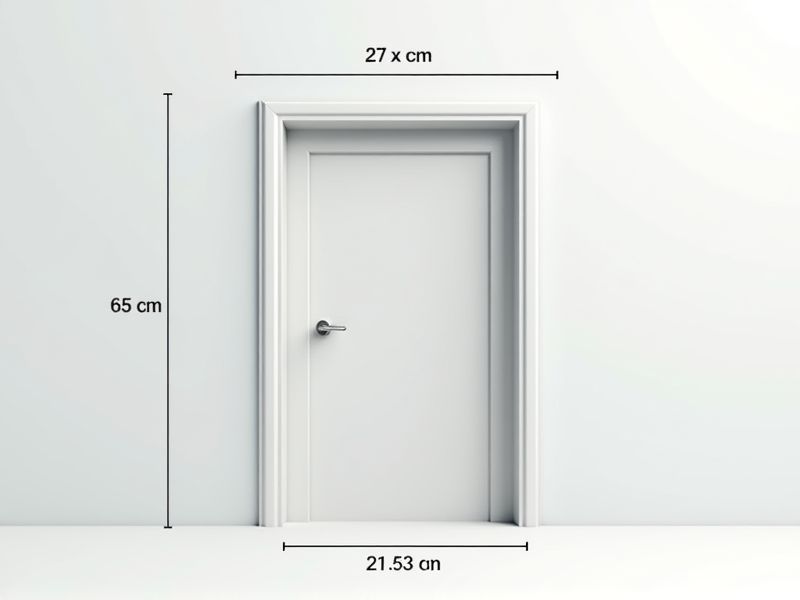
Standard dimensions for a fire exit are important to ensure quick and safe evacuation during emergencies. Typically, fire exit doors should have a minimum clear width of 32 inches (about 813 mm) and a height of at least 80 inches (about 2032 mm), according to common building codes like the International Building Code (IBC). For spaces with higher occupant loads, wider doors--sometimes 36 inches (914 mm) or more--may be required. Always consult your local building regulations or fire safety codes to confirm the exact requirements for your specific location and building type.
Clear Width
The standard for fire exit clear width is a critical factor in ensuring safe egress during emergencies. According to safety regulations, the minimum clear width for exit routes should be at least 36 inches in most occupancies, allowing for unhindered movement. In assemblies or crowded venues, this width may necessitate increases based on occupant load, which can be calculated as 0.2 inches per person in some building codes. Ensuring compliance with these standards can significantly enhance your building's fire safety preparedness.
Door Height
The minimum door height for fire exits is typically set at 2 meters (6 feet 8 inches) to ensure easy and quick access during emergencies. Fire exit doors must swing outward, allowing for maximum egress capacity in crowded situations. Compliance with local building codes is crucial, as they often stipulate requirements concerning door width, materials, and accessibility features. By adhering to these standards, you significantly enhance safety and the effectiveness of evacuation routes.
Landing Space
The landing space in fire exit regulations must measure at least 1.2 meters in width to ensure adequate movement during emergencies. This area should be kept free of obstructions and provide enough room for two-way traffic, accommodating the swift evacuation of individuals. According to safety standards, landing spaces should be located every 1.5 levels in a building, ensuring optimal access to escape routes. Ensuring these dimensions are met can significantly enhance your safety measures and efficiency in emergency situations.
Stair Tread Depth
The standard fire exit requirements specify that stair tread depth should measure a minimum of 11 inches to ensure safe egress during emergencies. It is critical for commercial buildings to comply with the International Building Code (IBC), which outlines guidelines for stair design and dimensions. A proper stair tread depth not only aids in maintaining balance but also reduces the risk of tripping, particularly in high-traffic conditions. When planning your building's exit routes, consider incorporating adequate signage and lighting alongside these dimensional standards for optimal safety.
Stair Riser Height
The standard stair riser height for fire exits should typically range from 4 to 7 inches, ensuring a balance between safety and accessibility. Building codes often mandate that every riser must measure consistently to prevent tripping hazards during an emergency evacuation. In commercial structures, it's crucial to have a maximum of 12 risers per flight to maintain a manageable evacuation route. You should also ensure that stair treads are wide enough, usually at least 11 inches, to accommodate quick and safe descents.
Handrail Height
The standard for fire exit handrail height is typically between 34 to 38 inches (86 to 97 centimeters) above the stair tread, providing adequate support for individuals during evacuation. Properly installed handrails significantly reduce the risk of falls and enhance safety in emergency situations. It's crucial to ensure that handrails are continuous and graspable, allowing for swift maneuvering on stairs and ramps. Compliance with building codes and safety standards not only ensures your property meets legal requirements but also prioritizes the well-being of occupants.
Headroom Clearance
In fire exit designs, a critical standard is headroom clearance, which mandates a minimum height of 7 feet above the exit path to ensure safe egress. This specification accommodates individuals of varying heights and any items they may be carrying during an emergency evacuation. Compliance with this standard not only enhances safety but also adheres to the guidelines set forth by the National Fire Protection Association (NFPA) and local building codes. Your awareness of these requirements can significantly impact the effectiveness of a building's fire safety plan.
Exit Signage Placement
Fire exit signage should be strategically placed at regular intervals, typically every 50 feet, ensuring visibility even in low-light conditions. Signs must be illuminated, with a brightness level of at least 5 foot-candles to guide individuals safely during emergencies. It is crucial that exit signs are positioned above doorways and along exit routes, maintaining a clear line of sight that directs people towards the nearest exit. Regular inspections, every six months, guarantee that the signage remains compliant with local fire codes and effectively aids in emergency evacuations.
Door Swing Direction
The fire exit standards emphasize the importance of door swing direction to ensure safe and efficient evacuation. Doors should swing outwardly, away from the direction of egress, to facilitate a rapid exit, especially in emergencies when crowds may gather. Compliance with local building codes typically mandates that at least 50% of exit doors in a building meet these specifications. Remember, in addition to door swing direction, proper signage and unobstructed pathways are crucial for effective fire safety measures.
Exit Pathway Lighting
Exit pathway lighting is essential for ensuring safe evacuation during emergencies, adhering to ANSI and NFPA standards. Typically, exit pathway lights must maintain a minimum illumination level of 1 foot-candle along the designated paths, providing clear visibility. These systems often include photoluminescent signs and emergency lighting that activate automatically during power outages. Regular maintenance and testing should be conducted at least monthly to ensure reliability and compliance with local safety regulations.
